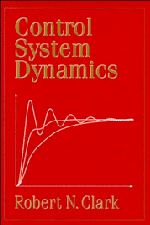Book contents
- Frontmatter
- Contents
- Preface
- 1 Introduction to Control System Engineering
- 2 Mathematical Models of Mechanical Systems
- 3 Mathematical Models of Electrical Systems
- 4 Mathematical Models of Electromechanical and Electrohydraulic Systems
- 5 Summary of Modeling Principles for Physical Systems
- 6 Solution to the Initial-Value Problem
- 7 Pole-Zero Methods of Analysis for Single-Input-Single-Output Systems
- 8 Automatic Feedback Control
- 9 Dynamic Analysis of Feedback Control Systems
- 10 Design of Feedback Control Systems
- 11 Frequency Response Analysis of Linear Systems
- 12 Stability Analysis by Nyquist's Criterion
- 13 Dynamic Analysis of Feedback Systems by Frequency Response Methods
- 14 Design of Feedback Systems by Frequency Response Methods
- 15 Advanced Topics
- Appendices
- Answers to Problems
- Bibliography
- Index
3 - Mathematical Models of Electrical Systems
Published online by Cambridge University Press: 05 June 2012
- Frontmatter
- Contents
- Preface
- 1 Introduction to Control System Engineering
- 2 Mathematical Models of Mechanical Systems
- 3 Mathematical Models of Electrical Systems
- 4 Mathematical Models of Electromechanical and Electrohydraulic Systems
- 5 Summary of Modeling Principles for Physical Systems
- 6 Solution to the Initial-Value Problem
- 7 Pole-Zero Methods of Analysis for Single-Input-Single-Output Systems
- 8 Automatic Feedback Control
- 9 Dynamic Analysis of Feedback Control Systems
- 10 Design of Feedback Control Systems
- 11 Frequency Response Analysis of Linear Systems
- 12 Stability Analysis by Nyquist's Criterion
- 13 Dynamic Analysis of Feedback Systems by Frequency Response Methods
- 14 Design of Feedback Systems by Frequency Response Methods
- 15 Advanced Topics
- Appendices
- Answers to Problems
- Bibliography
- Index
Summary
Introduction
Electric circuits composed of discrete elements in which the voltages and currents are described in continuous time are sometimes called analog circuits, to distinguish them from circuits used in digital signal processors. We now model some analog circuits by writing ordinary differential equations in the state-variable form just as we modeled mechanical systems in Chapter 2. We apply the basic principles of circuit analysis, which are Kirchhoff's voltage and current laws, Ohm's law, Faraday's law, and the law relating the voltage across a capacitor to the current through it. We consider only circuits composed of the following elements: voltage sources, current sources, resistors, capacitors, inductors, and operational amplifiers. Our treatment here is limited to the type of circuits commonly encountered in the signal-processing parts of control systems, as opposed to those in power supplies or in other highpowered devices.
In Section 3.2 we confine our attention to passive circuits. These circuits contain no energy sources (such as operational amplifiers or batteries) except for the voltage or current sources that drive them. We can apply nearly all the basic circuit laws in this simple setting, and we can demonstrate an important principle of control engineering pertaining to interconnected elements, called the loading effect.
In Section 3.3 we model active circuits having operational amplifiers. This extends significantly our capability to design dynamic circuits for control system purposes. We also study simple instrumentation circuits for measuring dynamic variables.
- Type
- Chapter
- Information
- Control System Dynamics , pp. 44 - 69Publisher: Cambridge University PressPrint publication year: 1996

